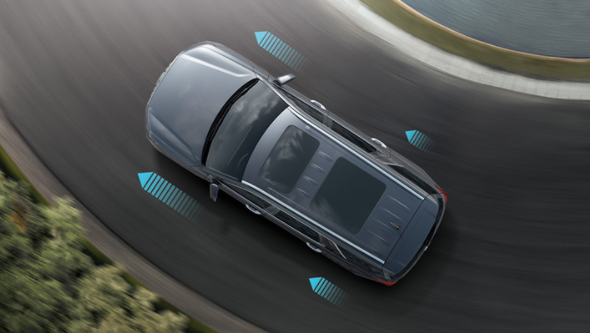open menu
- Home>
- Discover Kia>
- ASK>
- What is the Traction Control System(TCS) in a car, and what does the TCS light mean?
What is the Traction Control System(TCS) in a car, and what does the TCS light mean?
“The traction control system detects if any of the wheels are losing their grip on the road. Once located, it automatically corrects the problem to ensure the car's stability.”

The traction control system (TCS) detects if a loss of traction occurs among the car's wheels. Upon identifying a wheel that is losing its grip on the road, the system automatically applies the brakes to that individual one or cut down the car's engine power to the slipping wheel. If the wheels lose their grip on the road, it can lead the car to be unstable, resulting in a dangerous situation. Such traction loss commonly occurs on snowy or icy roads and in rainy weather.
Kia's compact SUVs, including the Seltos, offer a feature called the "Multi-traction control," which adjusts the wheels' traction according to circumstances. The technology reduces wheel slippage off-road by actively controlling the traction force of the front wheels through the TCS. Thanks to this new technology, it even allows compact SUVs to drive on snowy, muddy, and sandy roads with only the front two wheels.
You can find a yellow light known as the "TCS light" on the dashboard, which comes on at times. So, what does the light tell us?
1) The TCS light flashes as soon as your car starts accelerating.
The TCS light blinking upon acceleration could mean that the surface is not offering much friction. The light is designed to flash when driving on a snowy, muddy, or icy road. However, if the light blinks while your car slows down and the road is not slippery, then the issue could be with the ABS (Anti-lock braking system) sensor on your vehicle. In this case, check the codes from the ABS control unit to see if the sensor is failing to function.
2) The TCS light is on with an OFF sign underneath.
Simply, this means that your TCS is off. You can easily turn the TCS system on and off with a button inside your car. If you cannot find the button, look at the service manual to find out where it is.
3) The TCS light is constantly on.
A continuous TCS light, often accompanied by the ABS light, means something is going on in your traction control system. The solution is to read the codes in the ABS control unit and see what they say. Also, you can have your mechanic take a look.
5 Common Causes of TCS lights on Dashboard
✔ Failure in the ABS sensor
✔ Problems in the wiring to the ABS sensors
✔ Issues in the magnetic/ABS ring
✔ Water infiltrating to ABS sensor connectors
✔ Failure in the ABS control unit
Since traction control is highly critical for driving, if the TCS light turns on it should not be ignored. Failure in the TCS can hamper your wheels from properly spinning and cause you to lose control over the vehicle on slippery roads, which harms your tires' surface, engine performance and raises the risk of accidents. Issues related to the TCS or ABS can lead to the failure of brakes. So if the TCS and ABS lights come on, you should immediately have your mechanic inspect them.








